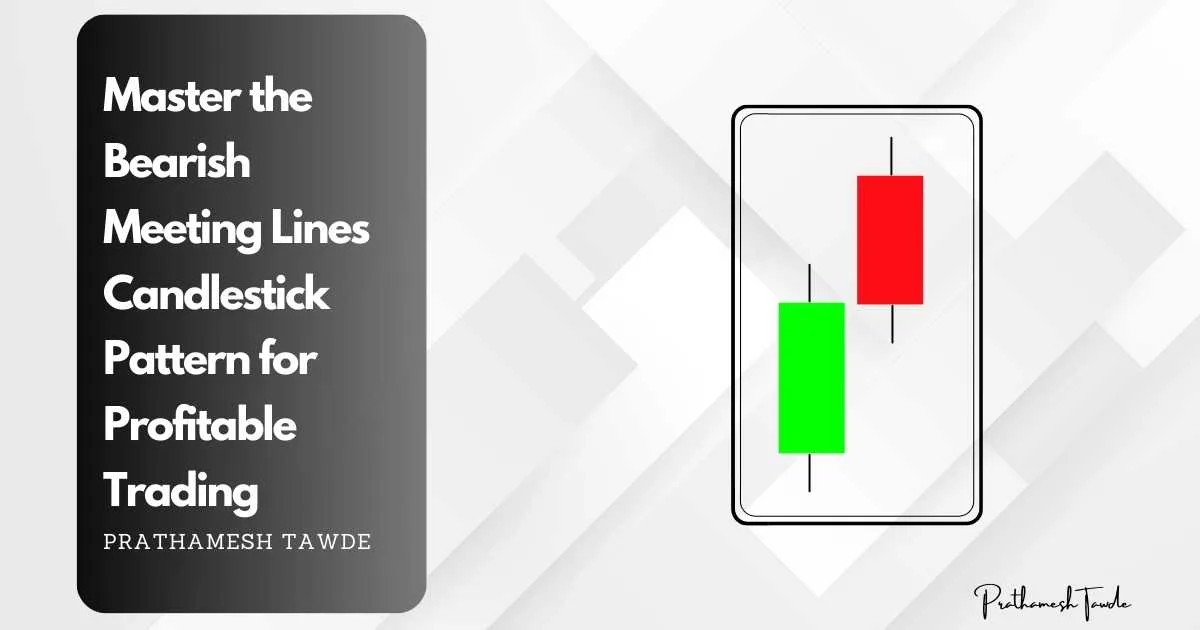Morning Star Candlestick Pattern : A Comprehensive Guide.
- Prathamesh Tawde
- December 16, 2023
Introduction
Technical analysis is vast and intricate. It’s filled with patterns and signals. They guide traders in making informed decisions. One such powerful pattern is the Morning Star. Traders recognize the morning star candlestick pattern for its reliability. It’s a beacon of hope in the turbulent seas of trading.
Understanding the Morning Star candlestick pattern
Formation and Components
The Morning star candlestick is a three-candle pattern. It shows a potential shift from a downtrend to an uptrend. It’s a bullish sign. It suggests that sellers are losing control and buyers are about to take over.
Ideal conditions for the pattern
The morning star candlestick pattern shows up at the end of a downtrend. It shows a change in market sentiment. It’s most effective when other indicators or patterns confirm it. They ensure the signal is not a false alarm.
Components of the morning star candlestick pattern
First Candle: bearish candle
The first candle in the Morning Star pattern is a long bearish (red) candle. It shows strong selling pressure. This sets the stage for the pattern, showing that the bears are in control.
Second Candle: Small-bodied candle (doji or spinning top)
The second candle is crucial. It’s a small candle. It can be a Doji, where the open and close prices are almost the same. Or, it can be a Spinning Top, a candle with a small body and long wicks. This candle signifies indecision in the market. The bulls and bears are equal.
Third candle: bullish candle
The third candle is a long bullish (green) candle that closes well into the body of the first candle. This shows that the bulls have taken control. A reversal is likely underway.
Psychology Behind the Morning Star candlestick Pattern
Market Sentiment Shifts
The morning star candlestick pattern represents a shift in market sentiment. At first, the bears are dominant. But, as the pattern progresses, the bulls start gaining strength. This ends in a bullish reversal.
Buyer and Seller Dynamics
In the first candle, sellers are dominant. The second candle shows hesitation, indicating a potential change. By the third candle, buyers take over. They’ve pushed prices up, completing the reversal.
Identifying the Morning Star pattern
Key Characteristics
- A long bearish candle.
- A small-bodied candle that can be a doji or spinning top.
- A long bullish candle that closes into the body of the first candle.
Visual Examples
Charts and diagrams can aid in identifying the Morning Star pattern. Visualizing past occurrences can help traders spot the pattern in real-time trading scenarios.
Significance in Different Market Conditions
Bullish Reversal Indications
The Morning Star pattern signals a strong bullish reversal. It suggests that the downtrend will likely reverse. This will give traders a chance to enter long positions.
Applications in various time frames
This pattern can be used in different time frames, from intraday charts to weekly charts. Yet, the longer the time frame, the more significant the pattern.
Comparison with Other Candlestick Patterns
Morning Star vs. Evening Star
The Morning Star signals a bullish reversal. The Evening Star indicates a bearish one. Both patterns are reliable, but occur in opposite market conditions.
Morning Star vs. Hammer
The Hammer is another bullish reversal pattern. It has a single candle with a long lower wick. The Morning Star is a three-candle pattern. It gives a stronger and more reliable signal.
Trading Strategies Using the Morning Star candlestick Pattern
Entry and Exit Points
Traders often enter a long position after the Morning Star pattern. They do this after the close of the third candle. You can find exit points using other indicators or predefined risk rules.
Risk Management Techniques
Using stop-loss orders below the low of the pattern can help manage risk. Also, adding the Morning Star to other indicators can confirm it. This also reduces the risk of false signals.
Technical indicators to confirm the pattern
Moving averages
Moving averages can help confirm the Morning Star pattern. Shorter-term moving averages crossing over longer-term ones can signal a bullish trend.
volume analysis
Higher volume forms during the third candle. It can confirm strong buying interest.
Common Mistakes and Pitfalls
Misidentification of patterns
One common mistake is misidentifying the Morning Star pattern. It’s ensuring all components are present, which is crucial for the pattern’s reliability.
Ignoring confirmatory signals.
Relying only on the Morning Star pattern is risky. It can lead to false signals and losses if you don’t seek confirmation from other indicators.
Case Studies and Real-World Examples
Historical Patterns and Outcomes
Studying old data can show how well the Morning Star pattern works. Case studies of past occurrences can highlight the pattern’s reliability.
Recent Examples in Major Stocks or Indices
Recent examples in big stocks or indices can show how the Morning Star pattern works.
Advanced Techniques
Backtesting Strategies
Testing the Morning Star pattern on historical data can help traders. It shows how well it works. It can also help them improve their strategies.
Tools and platforms for patttern analysis
Recommended Software
You can use tools and platforms to find candlestick patterns. Some examples are TradingView, MetaTrader, and others.
Free vs. Paid Tools
Free tools can work for beginners. However, paid tools offer advanced features and more data for experienced traders.
Expert opinions and insights
Quotes from renowned traders
Insights from experienced traders are valuable. They provide perspectives on the morning star candlestick pattern and its uses.
Studies and research findings
Studies and research can offer evidence of the pattern’s reliability. They show its effectiveness in different markets.
Conclusion
The Morning Star candlestick pattern is a potent tool in the arsenal of technical analysts. It can signal bullish reversals. This makes it invaluable for traders. They want to capitalize on market shifts. Traders can understand its parts, psychology, and use. They can then use the Morning Star pattern in their strategies. This will boost their chances of success.
FAQs
The Morning Star pattern signals a bullish reversal. It has three candles: a long bearish one, a small one (Doji or Spinning Top), and a long bullish one.
The Morning Star pattern is very reliable. This is especially true when confirmed by other technical indicators or patterns.
Gaps between the candles in the Morning Star pattern are important. They add to its meaning. The first gap down shows strong bearish sentiment. Next, a small candle shows indecision. Finally, a gap up shows bullish strength as buyers take control.
Traders usually place stop-loss orders below the small candle’s low. This is in the Morning Star pattern. This level is a logical point. It’s where the pattern’s bullish sentiment would be invalidated if it’s breached. This breach could signal a continuation of the downtrend.
To maximize profits when trading the Morning Star pattern, traders often use extra tools for technical analysis. These tools include support and resistance levels, trendlines, and moving averages. They use them to find possible price targets or areas of resistance. They may also consider using risk management strategies. For instance, they could use trailing stop-loss orders to lock in profits as the trade goes in their favor.

I’m Prathamesh Tawde, a leading figure in the dynamic world of financial markets. Born on March 30, 1986, in the vibrant city of Thane, Maharashtra, I’ve nurtured a profound passion for technical analysis and a commitment to guiding individuals toward successful trading journeys. With a mission to empower and educate, I’ve carved a distinct niche as a content creator, educator, and mentor.





